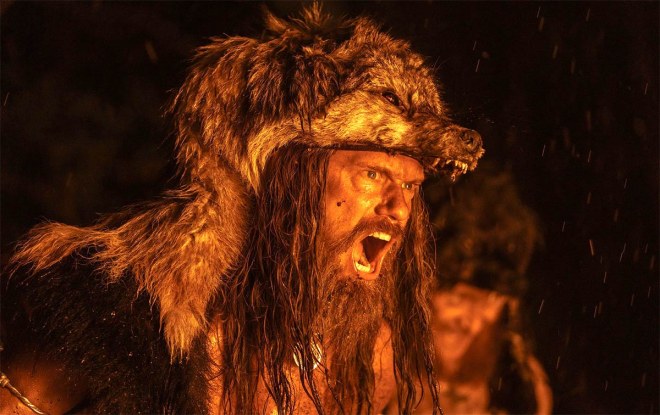In many ways, the Viking movie is a sub-genre as old as the cinematic form itself. And Vikings have certainly been an integral part of folklore and storytelling for centuries. However, the Viking movie seems to have found new life in recent years. Not only that but Viking tropes find their way into movies and TV shows that have another primary genre, such as the Thor series. So how can you weave Viking elements into a screenplay? What do you need to know about the genre when writing Viking movies? We investigate…
Who Were the Vikings?
The modern interest in the Viking culture is often in its anthropological and mythological elements, which deepen the stories beyond the raiding and pillaging typically illustrated in textbooks. The Vikings tie in the swashbuckling elements of the pirate movie and the character drama of the gangster movie while also having a rich history filled with angles to explore.
Some would consider The Viking (1928), which depicts Erik the Red’s exploration of the area east of Iceland, the first film with a Viking subject. Since then, there have been few films with a Viking theme, and even fewer that stray into fantasy or are based on tales connected to Viking history, such as adaptations of Beowulf. However, it’s a genre with increasing popularity in the 21st Century.
So what goes into creating a Viking movie or TV show? Let’s take a look at 10 elements that define the Viking genre.
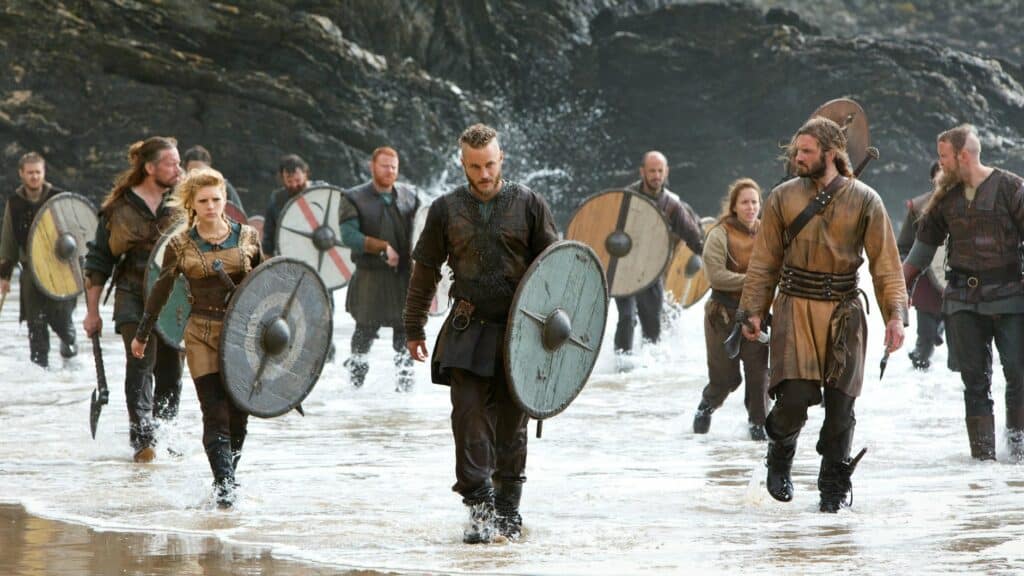
10 Key Elements of the Viking Genre
1. Nordic Culture
In order to have your audience believe they are a part of exploring the Viking Age, it is essential to pay attention to details of Norse culture.
Viking movies or series often reference Norse mythology, such as the Gods Odin, Loki, Thor, and the Goddesses Freyja and Frigg. There will also usually be scenes using Norse battle strategies, such as a shield wall and battles on longships. The context will be steeped in Norse traditions, even if the setting isn’t strictly set in the Viking era (such as Thor).
Not only does this attention to detail bring authenticity but it also brings purpose. It makes the Viking angle not feel perfunctory and instead, meaningful to the story at hand.
While writing the script for The Northman, for example, Robert Eggers worked alongside Icelandic poet Sjón, which allows the dialogue to retain a rhythm in sync with the folktale it is based on.
“We [worked] with archaeologists and historians, trying to recreate the minutiae of the physical world, while also attempting to capture, without judgment, the inner world of the Viking mind: their beliefs, mythology and ritual life,”
Robert Eggers
Of course, there is also not so historically accurate Viking material, such as the comedy Norsemen. But even then, an intimate knowledge of the folklore means that creators can play with expectations. Norse mythology is inextricable with Viking mythology. And so a keen understanding of this mythology and background is essential to creating a convincing foundation for a Viking story, whatever the direction or genre the writer intends to go down.
2. The Warrior Archetype
It would not be a Viking movie without some axe throwing and clashing of swords along with the characters that wield them.
This warrior archetype is strong, determined and focused on accomplishing their objectives. The warrior’s thought process is straightforward; they want to triumph over whatever challenges they face, including their own personal demons and their irrational dread of showing any sign of weakness.
In the case of the Vikings, their belief was that the best of warriors will feast in the halls of Valhalla with the Gods after they die. This emphasizes the stakes of picking and selecting their fights.
For example:
- Lagertha in Vikings
- Lagertha is one of the shield maidens trained in combat, who would also raid with the men while also being a wife, mother and ruler.
- Uhtred in The Last Kingdom
- Adopted by the Danes and raised in the Viking way of life, Uhtred swears vengeance for the murder of his adopted father Ragnar.
- He hopes to recapture Bebbanburg from his uncle, who plans to kill him to seize the city as his inheritance.
In other words, the journey must be worth dying for. The warrior will face a challenge that they will stop at nothing to accomplish. And even if they die, the overcoming of their challenge will be worth it and, in turn, help justify their warrior status.
3. Revenge Plot
Revenge stories are one of Hollywood’s favorite plot lines. And the vengeful protagonist features regularly in Viking movies. In many ways, it’s a way of achieving warrior status. The protagonist reaches for a grand motivation, such as avenging the death of a loved one or enacting revenge for an attack on their tribe.
For example, in The Northman…
- Before there was Hamlet, there was the story of Amleth. He’s a Viking prince who watches his father get murdered by his uncle and flees his homeland while repeating the mantra “I will avenge you father. I will save you mother. I will kill you Fjölnir”.
- This is the story’s drive. It’s a relatively simple premise but nonetheless allows for a satisfying chase and eventual fulfilment.
- Moreover, it is this drive and belief that it is Amleth’s destiny to fulfil this promise that leads the audience to question the violence in the patriarchal society of the past and present.
- Why must Amleth avenge his father’s death so violently? Why must his mother be saved? The film encourages the audience to not only enjoy the revenge narrative but also muse on its tropes and foundations. In this, the film manages to find contemporary resonance, despite being based on a centuries-old tale.
In Vikings: Valhalla, meanwhile…
- Freydis travels from Greenland to Norway to kill the man who sexually assaulted and branded her back with a cross, her as a girl.
- This particular example uses this plot to drive further conflict between the Pagans and the Christians, both symbolically and methodically.
So whilst revenge is a classic template for writing Viking movies, the above examples demonstrate how the arc can be tampered with, expanded on and subverted in order to find new pertinence and thematic dynamism in an old formula.
4. Characters in Norse Mythology
Sometimes in Viking movies, family overlaps with mythology. The Thor films, for example, depict Odin, Loki, Thor and the other Gods as one big squabbling family. These characters are loosely inspired by the Gods.
In Valhalla Rising, meanwhile, One-Eye goes on a journey that represents Odin’s quest for enlightenment.
- In a striking display of resignation, the protagonist accepts his fate and follows it wherever it may go. His visions also help him stay on course.
- One-Eye can also tell when it’s the end of the line for him. He prepares to begin constructing a cairn, a traditional Nordic tombstone.
- From One-Eye’s act of submission to his murderers, it seemed he wanted to die in his quest, but was given several opportunities to do so during his captivity, and instead struggled desperately to stay alive.
In this example, we can see how One-Eye’s journey borrows heavily from the myth of Odin. And this illustrates the wealth there is to draw from when it comes to Norse mythology. The Thor movies are also rewarding because of the way they use characters from across Norse mythology to form an ensemble and the way they play with expectations.
When it comes to source material, there is a lot to draw from. And featuring and updating these characters’ presence in new and interesting ways hooks audiences into the world of Norse mythology in general, thus making them more likely to be hooked into the world you’re building.
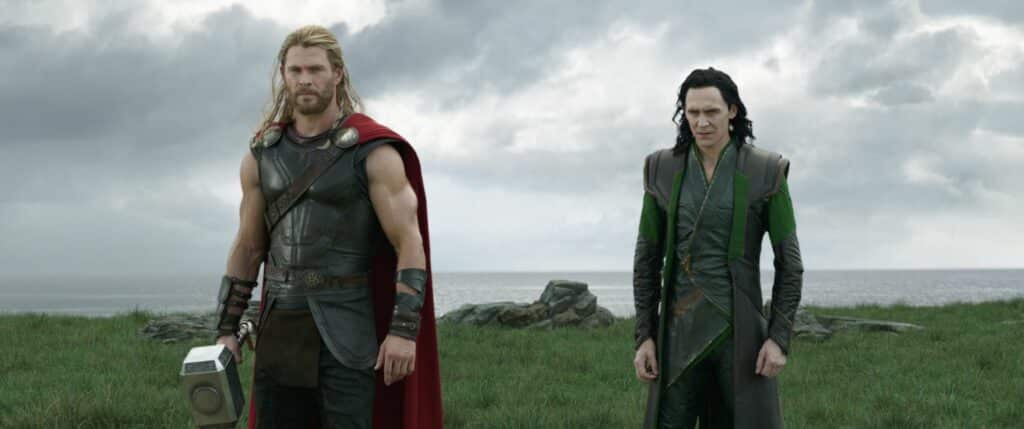
5. Cohesive and Brutal Action
The Viking movie is inherently, typically a part of the action movie genre. Whilst some movies and TV shows may take Viking elements and transpose them to a more modern-day setting (as in Thor), most will transport the audience directly to the Viking period.
And this is often done via raw, visceral and immersive action scenes. These kinds of action scenes allow the audience to identify with the characters in the battle, and determine how much they care if the character makes it or not.
“These are not just huge nameless faceless visual effect armies moving from left to right and right to left across the screen…You are with some of your favorite characters in any battle scene, in any fight, and you care. As an audience, you care whether these characters live or die.”
Michael Hirst (writer of Vikings)
However, action scenes can also introduce how the character thinks and behaves. As in the below clip from The Northman, we’re shown Amleth’s ruthlessness, which has grown since he was a child, as well as his strength and strategy as a warrior. The action is immersive, ruthless and rudimentary.
This is a great appeal of the Viking movie genre; its ability to thrust the audience into action which feels different from the kind of slick modern-day action most are used to in contemporary set movies. There are no guns and explosions here, it’s just hand-to-hand combat and raw material power. Characters must use both their strength and brains to succeed.
So when writing Viking movies, it’s important to try and plunge the audience into the action in a visceral way. How can your writing reflect the crude action so associated with the genre and time period? Lean closely into the characters’ experience and the feel of the action at hand.
6. Tropes of Masculinity
With its warrior protagonists, patriarchal societies and heavy focus on physical combat, Viking movies can seem like a host for masculine tropes. When thinking of Vikings, most will conjure imagery of chest-thumping men battling and grunting their way through their various battles. Typically, in an old world of rudimentary power struggles and technology, men lean into their masculinity in order to prevail.
Whilst many will come to expect this when they see a Viking movie, subverting such tropes or narratives can be a way of subverting the genre and/or adding something new to it.
Hiccup from How to Tain Your Dragon, for example, is strikingly different from the rest of his Viking family and peers.
- His character design is the opposite of what would be considered ‘masculine’ in their society. But what makes him stand out is his curiosity.
- Hiccup’s curiosity leads him to seek out more about the dragons terrorising his community.
- By going against tradition, befriending a rare Night Fury named Toothless, and learning to fly him, he can eventually save his homeland.
Furthermore, masculine tropes shouldn’t negate the strength of the female characters. So when writing Viking movies and TV, explore your female characters and how they match their male counterparts. Again, Viking mythology is full of strong, female characters whose depth can open up new, exciting avenues to explore.
The Viking genre can occasionally seem rather simplistic in its portrayal of gender stereotypes. But by getting past this simplicity, you can find ways of making your Viking story stand out and add something new to the genre as a whole.
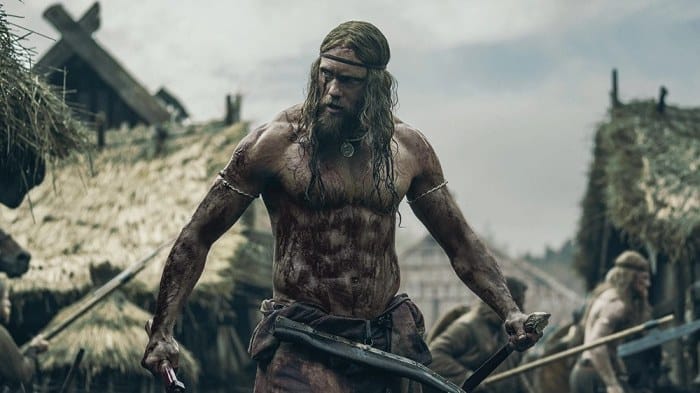
7. Exploring Christianity and Paganism
For over a century, thousands of Vikings converted to the Christian belief and settled throughout Europe. This did not come without its complications and consequences. And writing Viking movies that feel meaningful and distinctive can involve exploring such complexity to its full potential.
Vikings: Valhalla begins with what is known as the St. Brice’s Day Massacre.
- Here, Aethelred II, King of England, ordered the execution of all Norsemen residing in England at the time, despite the fact that the English and the Norse had coexisted peacefully for years.
- When King Canute, king of Denmark, heard of what would become known as “the vengeance”, he swore vengeance himself.
- While King Canute tried to bring the North together to seek revenge for their dead siblings, tensions flared between Norse Pagans and Norse Christians.
The Last Kingdom, meanwhile, covers the tension between the new Christian faith and the ancient Pagan customs.
- Uhtred disagrees with Christian laws and customs, but he respects their strength.
- The series shows even more clearly the central role that religious beliefs play in the animosity between the British and the Danish.
- The British are not just fighting for their territory back, but also to show the superiority of their God and faith.
And in Vikings, Ragnar, a Pagan, develops a friendship with a former Christian monk Athelstan, who becomes a significant character in the series.
- Athelstan appreciates the spiritual element in the legends of Thor, Odin, and the other Norse divinities.
- Even while he leads Ragnar in prayer, Athelstan wears an amulet depicting images of Norse gods.
These insights into the past relationships with religion bring light to the cultural impact still felt today. They allow the Viking movie to find resonance with contemporary issues and seek to provide insight into religion within society in general.
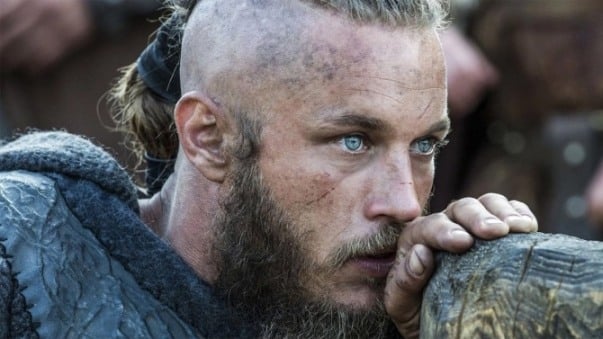
8. Variety of Locations
Because the Vikings were seafarers, their stories can be placed in various settings. Typically, Viking stories will be set in Scandinavian countries. But Viking myths and stories take place all over Europe. And making the most of these settings can be a key way of giving some distinction when writing Viking movies.
Settings for Viking stories have included, for example:
- Germany during the Roman occupation – Barbarians
- The Baltics in 922 – The 13th Warrior
- 10th century Russia- Viking
This range of settings demonstrates the vast array of contexts there is to explore within the Viking genre. So when writing Viking movies and TV, don’t take familiar landscapes of muddy fields and treacherous seas for granted. Instead, do some digging into the fascinating context that the Viking era serves up.
Characters, themes, storylines and rich locations lie in the wide-ranging history of the Vikings. And in this richness, there is the opportunity for great cinematic imagery as well as fascinating context. How can your Viking story make the most of its setting and truly stand out within the genre?
9. Kings, Earls, and Kingdoms – History Come Alive
During the Viking Age, which took place between 793–1066 AD, the Vikings were part of the formation of the Kingdoms of Europe; England, France, Norway, and Denmark.
- King Canute (or Cnut) of Denmark, who became king of all England for some time, is a character in both Vikings and Vikings: Valhalla.
- King Alfred the Great is thought to have put forth the idea of building all the kingdoms into one England and is a central part of The Last Kingdom
- Even Lagertha in Vikings becomes a ruler in her own right. After killing her abusive second husband, she takes on the title of Earl, holds her own lands, and leads armies.
These stories gain their popularity in many parts because of the evidence of mythology and archives surrounding figures in Norse/Viking history. It’s another example of how the Viking genre can serve up characters that fascinate audiences due to their grounding in real (albeit vastly mythologized) history.
So when writing Viking movies or TV series, conducting research is an essential part of your writing process. You may not use all (or any!) of it in the end directly. But in studying the historical figures that are crucial to the Viking myth, you will surely stumble upon potential plot lines, characters, character traits and dynamics to inform your own story.
10. Destiny vs Choice
Writing Viking movies and TV shows often involves exploring grand ideological and philosophical notions filtered through the characters’ desires and motivations. Characters typically take on these grand notions and their journeys involve wrestling with their implications.
“You can not escape what fate the Norns have spun”
The Northman
For instance, the incorporation of destiny is a frequent theme in Viking stories and is one that has been wrestled with since ancient times.
- Amleth’s destiny, for example, is intertwined with his vengeful oath. He believes he is a captive to his fate.
- Meanwhile, his love interest, the cunning Olga, believes in choice. She sees a future where they can break the hitherto accepted cycle of violence. That is why she responds to Amleth’s self-loathing with ‘That is for you to choose”.
- When Amleth decides to leave Olga, he chooses to face his destiny rather than be tethered to it, because he knows his children will be implicated if he doesn’t act.
Meanwhile, The Last Kingdom combines destiny and choice with the repeated mantra “Destiny is all”, said by Uthred.
- Uhtred is a believer in Norse mythology’s ‘Three Spinners of Fate’.
- They’re the goddesses who weave the threads of existence. In other words, they’re responsible for determining the destinies of all humans.
- Because the Three Spinners have already “spun his life’s threads”, he has no choice but to accept his fate and move forward with it. This is what he means when he says, “Destiny is all”. But the phrase could also be interpreted as illustrating how one forges their own destiny within the confines of fate.
Vengeance and family ties can seem like simplistic plot arcs. But the above examples demonstrate how simple ideas can become ones with enormous philosophical implications with the requisite depth in characterisation and drama.
In Conclusion: New Directions for Old Stories
It’s clear that there is evergreen popularity to Viking stories. And audiences seem to revel in the brutal violence associated with the culture. But many contemporary movies and TV shows also critique the cycle of violence alongside celebrating or exploring parts of the Norse culture.
It’s not an easy balance to get right. But by understanding some of the core elements of the genre, one can more easily subvert it and challenge these underlying tropes. This is really the key to adding a new spin on centuries-old tales.
When writing Viking movies and TV shows, how can you break new ground? What are the elements of Norse mythology and history that haven’t been explored? Who are the untapped characters and where are the under-explored settings? In what ways do these stories mirror our own times?
It’s fair to say there’s a lot of material to get your head around when it comes to delving into Viking and Norse history. But by getting to know this material, you will likely find your route into an idiosyncratic story.
–What did you think of this article? Share It, Like It, give it a rating, and let us know your thoughts in the comments box further down…
– Struggling with a script or book? Story analysis is what we do, all day, every day… check out our range of script coverage services for writers & filmmakers.
This article was written by Shayla Michel and edited by IS Staff.
Get *ALL* our FREE Resources
Tackle the trickiest areas of screenwriting with our exclusive eBooks. Get all our FREE resources when you join 60,000 filmmakers on our mailing list!

